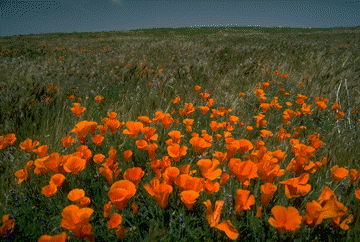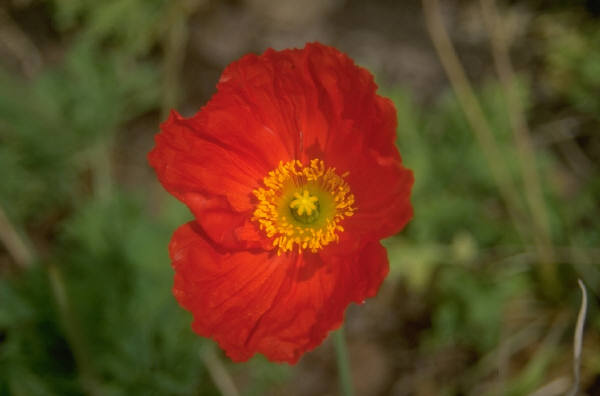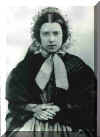

War Casualties
This area is to remember those members of the family who died in defence of their (or
their adopted) countries. Much of this information has been found from the
Commonwealth War Graves
Commission Web Site. The listings are, Ferdinand,
Ferdinando and Relatives Names.

They shall grow not old, as we that are left grow old.
Age shall not weary them, nor the years condemn.
At the going down of the sun, and in the morning, We Will Remember Them.
Please remember them on the 11th
November.

Ferdinand Names


In Memory of
Ernest Coulson Ferdinand
Private
4393126
6th Bn., Green Howards (Yorkshire Regt.)
Who died on
Saturday, 14th November 1942. Age 24.
Son of John Henry and Gertrude Maud Ferdinando; husband of Alice
Ferdinand of Gateshead, Co. Durham
Commemorative Information
Alamein Memorial, Egypt
Column 60
The Alamein Memorial forms the entrance to the El Alamein War Cemetery.
Alamein is a village, bypassed by the main coast road, approximately 130 kilometres
west of Alexandria on the road to Mersa Matruh.
Back to Top


In Memory of
Ernest George Crocker Ferdinand
Who died on
Sunday, 26th April 1942. Age 37
of 30 The Paragon. Husband of Violet Hilda Ferdinand. at 30 The
Paragon
Commemorative Information County Borough of Bath, Section of the
Civilian War Dead Register
Back to Top


In Memory of
Violet Hilda Ferdinand
Who died on
Sunday, 26th April 1942. Age 34
of 30 The Paragon. Wife or Ernest George Crocker Ferdinand. at 30
The Paragon
Commemorative Information County Borough of Bath, Section of the
Civilian War Dead Register
Back to Top


In Memory of
Harry Robert Ferdinand
Private
5439404
2nd Bn., Duke of Cornwall's Light Infantry
Who died on
Wednesday, 12th March 1941, Age 22.
Son of Harry Ferdinand and of Rosetta Ferdinand, of Ilford Essex
Commemorative Information
Southampton (Hollybrook) Cemetery, Hampshire, United Kingdom
Section M. 12. Grave 69
The Cemetery is on high ground in Chilworth Road, Shirley overlooking
Shirley Church and the Isle of Wight.
Historical Information
During the two world wars, the
United Kingdom became an island fortress used for training troops and launching
land, sea and air operations around the globe. There are more than 170,000
Commonwealth war graves in the United Kingdom, many being those of servicemen
and women killed on active service, or who later succumbed to wounds. Others
died in training accidents, or because of sickness or disease. The graves, many
of them privately owned and marked by private memorials, will be found in more
than 12,000 cemeteries and churchyards. Southampton was No 1 Port during the
First World War and military hospitals were established in the University
buildings, in the Highfield Institution and at Shirley Warren. During the Second
World War, 4.5 million tons of military equipment passed through Southampton
docks and parts of the prefabricated harbours used at Arromanches during the
Normandy invasion were made there. For a while, Southampton was also base to the
14th Major Port Transportation Corps of the United States Army. Southampton (Hollybrook)
Cemetery contains burials of both wars and a memorial to the missing. The
cemetery has a First World War plot near the main entrance containing most of
the 113 graves from this period. Behind this plot is the Hollybrook Memorial
which commemorates by name almost 1,900 servicemen and women of the Commonwealth
land and air forces whose graves are not known, many of whom were lost in
transports or other vessels torpedoed or mined in home waters. It also bears the
names of those who were lost or buried at sea, or who died at home but whose
bodies could not be recovered for burial. Most of the 186 Second World War
burials are in a separate war graves plot. In addition to the Commonwealth war
graves, the cemetery contains 67 war graves of other nationalities, many of them
German.
Back to Top


In Memory of
J. Ferdinand
Rifleman
203389
25th Reserve (Garrison) Bn., Rifle Brigade
Who died on
Thursday, 24th October 1918. Age 33.
Husband of Elizabeth Ferdinand, of 14, Rutland Road., South Hackney,
London
Commemorative Information
City of London Cemetery, Essex, United Kingdom
417.89457. (A/C Screen Wall)
Many of the soldiers buried here died in Bethnal Green Military
Hospital. The Screen Wall at the back of the War Graves Plot commemorates by name
those buried in the plot or in graves elsewhere in the Cemetery which could not be marked
by headstones and those who were cremated in the City of London Crematorium.
Back to Top


In Memory of
Roy Frederick Ferdinand
Flying Officer
80817
263 Sqdn., Royal Air Force Volunteer Reserve
Who died on
Thursday, 12th June 1941. Age 21.
Son of Frederick Horace and Winifred Helena Ferdinand, of Chesham
Commemorative Information
Chesham Bois Burial Ground, Buckinghamshire, United Kingdom
Sec. O. Grave 912
For an Article about Roy Please Follow
This Link
Back to Top


In Memory of
William Ferdinand
Private
4758
1st/2nd Bn., London Regt (Royal Fusiliers)
Who died on
Friday, 15th September 1916, age 38.
Husband of Nellie Maria Ferdinand, of 23, Christmas Place, Christmas
Street, Gillingham, Kent
Commemorative Information
Thiepval Memorial, Somme, France
Pier and Face 9 D and 16 B
The Thiepval Memorial found on the D73, off the main Bapaume to Albert
Road (D929).
Historical Information
On 1 July 1916, supported by a
French attack to the south, thirteen divisions of Commonwealth forces launched
an offensive on a line from north of Gommecourt to Maricourt. Despite a
preliminary bombardment lasting seven days, the German defences were barely
touched and the attack met unexpectedly fierce resistance. Losses were
catastrophic and with only minimal advances on the southern flank, the initial
attack was a failure. In the following weeks, huge resources of manpower and
equipment were deployed in an attempt to exploit the modest successes of the
first day. However, the German Army resisted tenaciously and repeated attacks
and counter attacks meant a major battle for every village, copse and farmhouse
gained. At the end of September, Thiepval was finally captured. The village had
been an original objective of 1 July. Attacks north and east continued
throughout October and into November in increasingly difficult weather
conditions. The Battle of the Somme finally ended on 18 November with the onset
of winter. In the spring of 1917, the German forces fell back to their newly
prepared defences, the Hindenburg Line, and there were no further significant
engagements in the Somme sector until the Germans mounted their major offensive
in March 1918. The Thiepval Memorial, the Memorial to the Missing of the Somme,
bears the names of more than 72,000 officers and men of the United Kingdom and
South African forces who died in the Somme sector before 20 March 1918 and have
no known grave. Over 90% of those commemorated died between July and November
1916. The memorial also serves as an Anglo-French Battle Memorial in recognition
of the joint nature of the 1916 offensive and a small cemetery containing equal
numbers of Commonwealth and French graves lies at the foot of the memorial. The
memorial, designed by Sir Edwin Lutyens, was built between 1928 and 1932 and
unveiled by the Prince of Wales, in the presence of the President of France, on
31 July 1932. The dead of other Commonwealth countries who died on the Somme and
have no known graves are commemorated on national memorials elsewhere.
Back to Top

Ferdinando Names


In Memory of
Derrick James Ferdinando
Flying Officer
57541
Royal Air Force Volunteer Reserve
Who died on
Friday, 6th September 1946, Age 21.
Son of James Henry William and Alice Amelia Ferdinando, of Winchmore
Hill, Middlesex
Commemorative Information
Oxford (Botley) Cemetery, Oxfordshire, United Kingdom
Plot H/3, Grave 165
The majority of the 1914-18 War burials are located in a special war
graves plot in section I.1 in the Southern part of the Cemetery. Many of them are
casualties from the 3rd Southern General Hospital (an Oxfordshire Territorial Unit), which
was housed in the Examination Schools and a number of other buildings in Oxford.
During the early months of the 1939-1945 War ground adjoining the 1914-1918 plot, in
sections I.1 and H.1, was set aside for service war graves and the whole now forms the
combined 1914-1918 and 1939-1945 War Graves Plot. This burial ground was selected as
a Royal Air Force Regional Cemetery and was used by various R.A.F. stations in Berkshire
and by other stations in neighbouring counties.
Historical Information
During the two world wars, the
United Kingdom became an island fortress used for training troops and launching
land, sea and air operations around the globe. There are more than 170,000
Commonwealth war graves in the United Kingdom, many being those of servicemen
and women killed on active service, or who later succumbed to wounds. Others
died in training accidents, or because of sickness or disease. The graves, many
of them privately owned and marked by private memorials, will be found in more
than 12,000 cemeteries and churchyards. During the First World War, the 3rd
Southern General Hospital (an Oxfordshire Territorial Unit) was housed in the
Examination Schools and a number of other buildings in Oxford. Oxford (Botley)
Cemetery contains 156 burials from the First World War, all in the war graves
plot in section I/1. The cemetery was designated a Royal Air Force regional
cemetery during the Second World War and was used by RAF stations in Berkshire
and neighbouring counties. Practically all of the 516 Second World War burials
(one of them unidentified) are in the war graves plot, which was extended from
the section used during the First World War. In addition to the Commonwealth war
graves, Oxford (Botley) Cemetery contains almost 70 war graves of other
nationalities.
Back to Top


In Memory of
Samuel John Ferdinando
Private
5337697
1st Bn., Dorsetshire Regiment
Who died on
Sunday, 11th June 1944. Age 23.
Son of Samuel John and Lillie Victoria May Ferdinando, of Wandsworth,
London
Commemorative Information
Bayeux War Cemetery, Calvados, France
XI. E. 24
The town of Bayeux, in Normandy,
lies 24 kilometres north-west of Caen. Bayeux War Cemetery is situated in the
south-western outskirts of the town on the by-pass, which is named Rue de Sir
Fabian Ware. On the opposite side of the road stands the Bayeux Memorial.
Historical Information
Bayeux was the first French town of
importance to be liberated from the Germans in June 1944. The are now over
4,100, 1939-45 Commonwealth war casualties commemorated in this site. Of these,
338 are unidentified casualties. Also commemorated here are 7 non-world war and
more than 500 Foreign National war casualties.
Back to Top

Relatives Names


In Memory of
Alois Vašátko DFC
Wing Commander
83233
312 (Czech) Sqdn., Royal Air Force Volunteer Reserve
Who died on
Tuesday, 23rd June 1942
Native of Czechoslovakia
Commemorative Information
Runnymede Memorial, Surrey, United Kingdom
Panel 64
This Memorial overlooks the River Thames on Cooper's Hill at Englefield
Green between Windsor and Egham on the A308, 4 miles from Windsor.
For an Article about Alois please follow
this link
Back to Top


In Memory of
Henry Robert Whyment
Private
G/34259
2nd Bn., Middlesex Regiment
who died on
Tuesday, 27th February 1917
Commemorative Information
Thiepval Memorial, Somme, France
Pier and Face 12 D and 13B
The Thiepval Memorial will be found on the D73,
off the main Bapaume to Albert road (D 929).
Historical Information
On 1st July 1916, supported by a French attack to the South,
thirteen divisions of Commonwealth forces launched an offensive on a line from
north of Gommecourt to Maricourt. Despite a preliminary bombardment
lasting seven days, the German defences were barely touched and the attack met
unexpectedly fierce resistance. Losses were catastrophic and with only
minimal advances on the southern flank, the initial attack was a failure.
In the following weeks, huge resources of manpower and equipment were deployed
in an attempt to exploit the modest successes of the first day. However,
the German Army resisted tenaciously and repeated attacks and counter attacks
meant a major battle for every village, copse and farmhouse gained. At the
end of September, Thiepval was finally captured. The village had been an
original objective of 1st July. Attacks North and East continued
throughout October and into November in increasingly difficult weather
condition. The Battle of the Somme finally ended on 18 November with the onset
of winter. In the Spring of 1917, the German force fell back to their
newly prepared defences, the Hindenburg Line, and there were no further
significant engagements in the Somme sector until the Germans mounted their
major offensive in March 1918. The Thiepval Memorial, the Memorial to the
Missing of the Somme, bears the names of more than 72,000 officers and men of
the United Kingdom and African forces who died in the Somme sector before March
1918 and have no known grave. Over 90% of those commemorated died between
July and November 1916. The Memorial also serves as an Anglo-French Battle
Memorial in recognition of the joint nature of the 1916 offensive and a small
cemetery containing equal numbers of Commonwealth and French graves lies at the
foot of the memorial. The memorial, designed by Sir Edwin Lutyens, was
built between 1928 and 1932 and unveiled by the Prince of Wales, in the presence
of the President of France, on 31st July 1932. The dead of other Commonwealth
countries who died on the Somme have no known graves are commemorated on
national memorials elsewhere.
Back to Top

by Lt. Col. John McCrae, M.D.,
1872-1918


